
The Mesolithic or Middle Stone Age is the Old World archaeological period between the Upper Paleolithic and the Neolithic. The term Epipaleolithic is often used synonymously, especially for outside northern Europe, and for the corresponding period in the Levant and Caucasus. The Mesolithic has different time spans in different parts of Eurasia. It refers to the final period of hunter-gatherer cultures in Europe and Middle East, between the end of the Last Glacial Maximum and the Neolithic Revolution. In Europe it spans roughly 15,000 to 5,000 BP; in the Middle East roughly 20,000 to 10,000 BP. The term is less used of areas farther east, and not at all beyond Eurasia and North Africa.
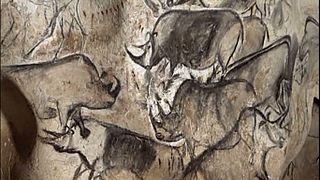
In the history of art, prehistoric art is all art produced in preliterate, prehistorical cultures beginning somewhere in very late geological history, and generally continuing until that culture either develops writing or other methods of record-keeping, or makes significant contact with another culture that has, and that makes some record of major historical events. At this point ancient art begins, for the older literate cultures. The end-date for what is covered by the term thus varies greatly between different parts of the world.

Frederick DuCane GodmanDCL FRS FLS FGS FRGS FES FZS MRI FRHS was an English lepidopterist, entomologist and ornithologist. He was one of the twenty founding members of the British Ornithologists' Union. Along with Osbert Salvin, he is remembered for studying the fauna and flora of Central America.
Combe Hill is a causewayed enclosure, near Eastbourne in East Sussex, on the northern edge of the South Downs. It consists of an inner circuit of ditches and banks, incomplete where it meets a steep slope on its north side, and the remains of an outer circuit. Causewayed enclosures were built in England from shortly before 3700 BC until at least 3500 BC; they are characterized by the full or partial enclosure of an area with ditches that are interrupted by gaps, or causeways. Their purpose is not known; they may have been settlements, meeting places, or ritual sites. The historian Hadrian Allcroft included the site in his 1908 book Earthwork of England, and in 1930 E. Cecil Curwen listed it as a possible Neolithic site in a paper which attempted to provide the first list of all the causewayed enclosures in England.

Sussex, from the Old English 'Sūþsēaxe', is a historic county in South East England.

Lovas is a village and seat of municipality in the Vukovar-Syrmia County of eastern Croatia, located on the slopes of Fruška Gora, a few kilometers south of the main road connecting Vukovar with Ilok. Lovas has a population of 1,214 (2011), and its municipality also includes the smaller village of Opatovac which is located to the north, at the Danube. Lovas is underdeveloped municipality which is statistically classified as the First Category Area of Special State Concern by the Government of Croatia.

The Tomb of the Roaring Lions is an archaeological site at the ancient city of Veii, Italy. It is best known for its well-preserved fresco paintings of four feline-like creatures, believed by archaeologists to depict lions. The tomb is believed to be one of the oldest painted tombs in the western Mediterranean, dating back to 690 BCE. The discovery of the Tomb allowed archaeologists a greater insight into funerary practices amongst the Etruscan people, while providing insight into art movements around this period of time. The fresco paintings on the wall of the tomb are a product of advances in trade that allowed artists in Veii to be exposed to art making practices and styles of drawing originating from different cultures, in particular geometric art movements in Greece. The lions were originally assumed to be caricatures of lions – created by artists who had most likely never seen the real animal in flesh before.

Dorman Museum is a local and social history museum on the town centre side of Albert Park, Linthorpe in Middlesbrough, North Yorkshire, England. It is one of two museums operated by the local borough council, along with the Captain Cook birthplace in Stewart Park.
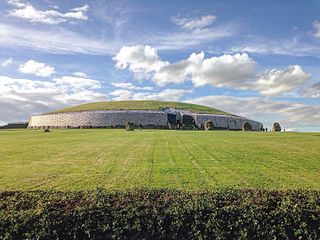
The prehistory of Ireland has been pieced together from archaeological evidence, which has grown at an increasing rate over the last decades. It begins with the first evidence of permanent human residence in Ireland around 10,500 BC and finishes with the start of the historical record around 400 AD. Both the beginning and end dates of the period are later than for much of Europe and all of the Near East. The prehistoric period covers the Palaeolithic, Mesolithic, Neolithic, Bronze Age and Iron Age societies of Ireland. For much of Europe, the historical record begins when the Romans invaded; as Ireland was not invaded by the Romans its historical record starts later, with the coming of Christianity.
Steven Mithen, is an archaeologist. He is noted for his work on the evolution of language, music and intelligence, prehistoric hunter-gatherers, and the origins of farming. He is professor of early prehistory at the University of Reading.
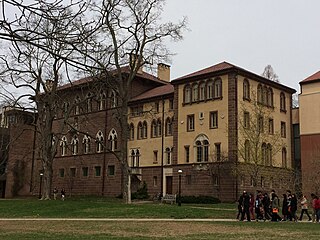
The Princeton University Art Museum (PUAM) is the Princeton University gallery of art, located in Princeton, New Jersey. With a collecting history that began in 1755, the museum was formally established in 1882, and now houses over 113,000 works of art ranging from antiquity to the contemporary period. The Princeton University Art Museum dedicates itself to supporting and enhancing the university's goals of teaching, research, and service in fields of art and culture, as well as to serving regional communities and visitors from around the world. Its collections concentrate on the Mediterranean region, Western Europe, Asia, the United States, and Latin America.
The Subneolithic is an archaeological period sometimes used to distinguish cultures that are transitional between the Mesolithic and the Neolithic. Subneolithic societies typically adopted some secondary elements of the Neolithic package, but retained economies based on hunting and gathering and fishing instead of agriculture. For the most part they were sedentary. The Subneolithic dates to the period 5000/4000–3200/2700 BCE in Scandinavia, north and north-eastern Europe.

Afrasiyab ,(Persian: افراسيابafrāsiyāb) is an ancient site in Northern Samarkand, present day Uzbekistan, that was occupied from c. 500 BC to 1220 AD prior to the Mongol invasion in the 13th century. The oldest layers date from the middle of the first millennium BC. Today, it is a hilly grass mound located near the Bibi Khanaum Mosque. Excavations uncovered the now famous Afrasiab frescoes exposed in the Afrasiab Museum of Samarkand, located next to the archaeological site.
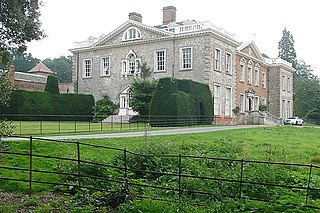
Frederick St John Newdigate Barne was a British army officer and a Conservative politician who sat in the House of Commons from 1876 to 1885.

The International Inventions Exhibition was a world's fair held in South Kensington in 1885. As with the earlier exhibitions in a series of fairs in South Kensington following the Great Exhibition, Queen Victoria was patron and her son Albert Edward, the Prince of Wales, was president of the organising committee. It opened on 4 May and three and three-quarters of a million people had visited when it closed 6 months later.
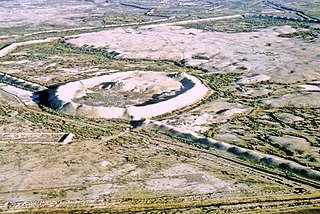
The South Turkmenistan Complex Archaeological Expedition (STACE), also called the South Turkmenistan Archaeological Inter-disciplinary Expedition of the Academy of Sciences of the Turkmen Soviet Socialist Republic (YuTAKE) was endorsed by the Turkmenistan Academy of Sciences. It was initially organized by the orientalist Mikhail Evgenievich Masson in 1946. The expedition had several excavations or "Brigades", based on sites and periods, and were spread over many years.

China painting, or porcelain painting, is the decoration of glazed porcelain objects such as plates, bowls, vases or statues. The body of the object may be hard-paste porcelain, developed in China in the 7th or 8th century, or soft-paste porcelain, developed in 18th-century Europe. The broader term ceramic painting includes painted decoration on lead-glazed earthenware such as creamware or tin-glazed pottery such as maiolica or faience.

Ceramic art is art made from ceramic materials, including clay. It may take varied forms, including artistic pottery, including tableware, tiles, figurines and other sculpture. As one of the plastic arts, ceramic art is a visual art. While some ceramics are considered fine art, such as pottery or sculpture, most are considered to be decorative, industrial or applied art objects. Ceramic art can be created by one person or by a group, in a pottery or a ceramic factory with a group designing and manufacturing the artware.

Clitheroe Castle Museum is located in Clitheroe, Lancashire, England, in the former Steward's House, a Grade II listed building that was built in the 18th century to house the steward of Clitheroe Castle. It is a museum showing the history of the local area.
John Machell (1637–1704) was for twenty years Member of Parliament for Horsham, Sussex, during the reigns of Charles II, James II and William III and Mary II. By the marriage of his daughter Isabella Machell (1670–1764) to Arthur Ingram, 3rd Viscount of Irvine, he became the grandfather of the fourth, fifth, sixth, seventh and eighth Viscounts of Irvine, and great-grandfather of the ninth, seated at Temple Newsam near Leeds, whose family inherited and augmented his valuable property of Hills house at Horsham, and continued the parliamentary tradition there.
















